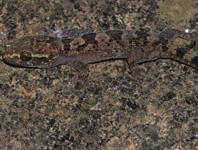Abstract
Markevich (1940) established Pseudolepeophtheirus Markevich, 1940 for Pseudolepeophtheirus longicauda Markevich, 1940 based on copepods collected from the pleuronectid fish Platichthys stellatus (Pallas, 1787). Dojiri & Ho (2013) synonymized the genus and the species with Lepeophtheirus Nordmann, 1832 and Lepeophtheirus parvicruris Fraser, 1920, respectively. Later, Homma et al. (2020) resurrected Markevich’s species as a member of Lepeophtheirus, i.e., as L. longicauda (Markevich, 1940). The last component of the names of both genera is ‘phtheirus’ (transliterated from the Greek φθειρ; Nordmann 1832: 30), a masculine noun, and thus under Article 30.1.2 of the International Code of Zoological Nomenclature (hereinafter, Code; International Commission on Zoological Nomenclature 1999), both generic names are also masculine. The species-group name longicauda might be regarded as either a noun in apposition or as an adjective in the feminine gender, and Markevich (1940) did not specify his intention in this regard. Bearing in mind that ‘cauda’, meaning ‘tail’, actually is a feminine Latin noun and that Markevich did not change the final ‘-a’ to ‘-us’ to match the masculine gender of the genus, we deem that longicauda Markevich, 1940 is a noun in apposition, a position supported by Article 31.2.2 of the Code.
References
Cressey, R. (1966) A new species of Dentigryps Wilson (Copepoda, Caligoida) from Madagascar. Proceedings of the Biological Society of Washington, 79, 91–94.
Dojiri, M. & Ho, J.-S. (2013) Systematics of the Caligidae, Copepods Parasitic on Marine Fishes. Brill, Leiden, xii + 448 pp.
https://doi.org/10.1163/9789004204256
Fraser, C.M. (1920) Copepods parasitic on fish from the Vancouver Island region. Proceedings and Transactions of the Royal Society of Canada, Third Series, 13, 45–67, pls. I–VIII.
Hewitt, G.C. (1971) Species of Lepeophtheirus (Copepoda, Caligidae) recorded from the Ocean Sunfish (Mola mola) and their implications for the caligid genus Dentigryps. Journal of the Fisheries Research Board of Canada, 28, 323–334.
https://doi.org/10.1139/f71-044
Homma, R., Uyeno, D. & Kakui, K. (2020) Integrative taxonomy of Pseudolepeophtheirus longicauda (Crustacea: Copepoda: Caligidae) parasitic on Platichthys stellatus (Actinopterygii: Pleuronectidae). Parasitology International, 78, 102135. (note: the printed journal volume containing this article was dispatched on 24 July 2020)
https://doi.org/10.1016/j.parint.2020.102135
International Commission on Zoological Nomenclature (1999) International Code of Zoological Nomenclature. 4th Edition. International Trust for Zoological Nomenclature, London, xxix + 306 pp.
Linnaeus, C. (1766) Systema Naturæ. 12th Edition. Impensis Laurentii Salvii, Holmiæ, 532 pp.
Markevich, A.P. (1940) Novi vidi parazitichnykh Copepoda. Depovidi Akademiyi Nauk SSSR, 11, 11–21.
Nordmann, A. von (1832) Mikrographische Beiträge zur Naturgeschichte der wirbellosen Thiere. Heft 2. G. Reimer, Berlin, xviii + 150 pp., 10 pls.
Pallas, P.S. (1787) Piscium novae species descriptae. Nova Acta Academiae Scientiarum Imperialis Petropolitanae, 1, 347–360, pls. 9–11.
Walter, T.C. & Boxshall, G. (2018) World of Copepods database. Lepeophtheirus longicaudus (Cressey, 1966). Available from: http://www.marinespecies.org/copepoda/aphia.php?p=taxdetails&id=364024 (accessed 27 July 2020)
Wilson, C.B. (1913) Crustacean parasites of West Indian fishes and land crabs, with descriptions of new genera and species. Proceedings of the United States National Museum, 44, 189–277, pls. 18–53.


